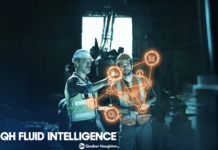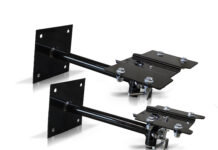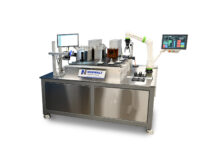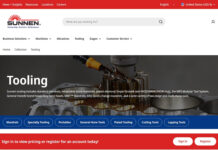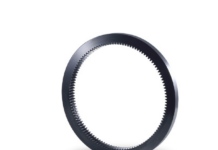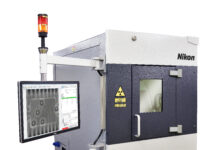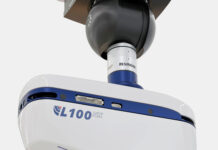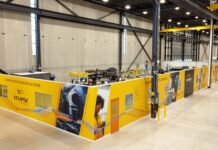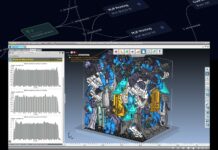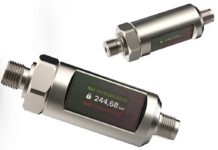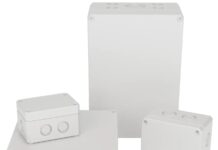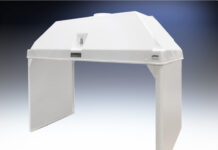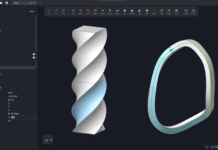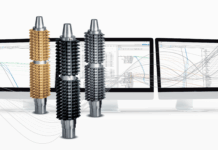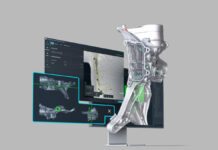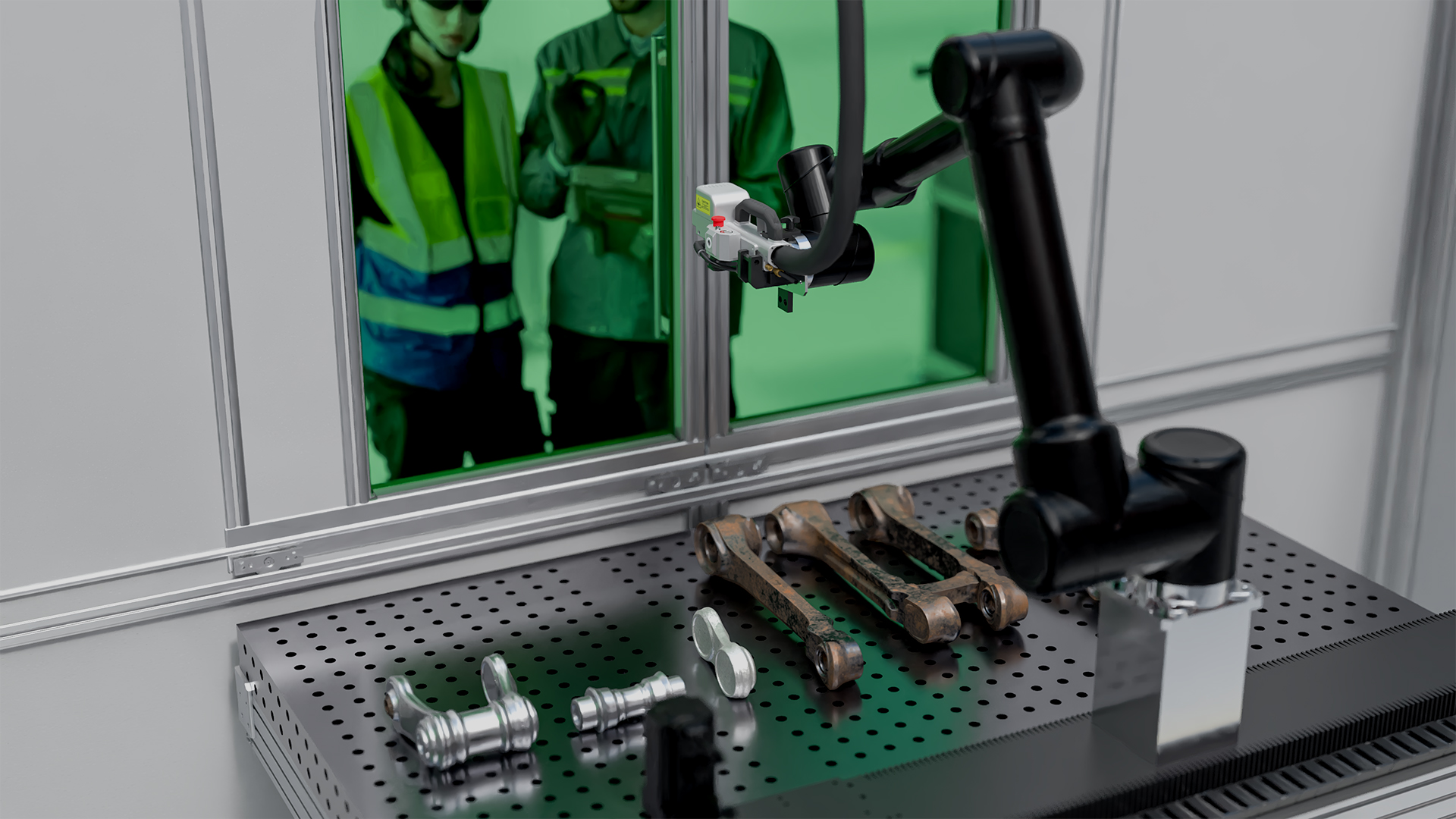
Today, advancements in industrial laser cleaning automation show great promise in boosting productivity and safety when rust and contaminant removal or surface preparation is required for higher volumes of components and equipment.
Specifically, combining lasers and advanced robotics within enclosed workcells enables operators to efficiently and repeatedly clean components of different sizes, shapes, and materials on a level previously unattainable through manual methods.
“Automated laser cleaning systems are designed to cost-effectively clean high volumes of even the largest format parts and equipment and can be tailored to suit the size and complexity of the parts, while eliminating concerns over operator safety,” says Wayne Tupuola, CEO, Orlando, Florida-based Laser Photonics (NASDAQ: LASE), a leading global industrial developer of laser systems for cleaning and other material processing applications.
Industrial manufacturers frequently need to remove corrosion, grease, residue, and old coatings, or roughen the surface of metals prior to coating components and equipment. At times, contaminants or toxic substances need to be eliminated before further processing.
The challenge is that conventional methods like sandblasting, dry ice blasting, and chemical stripping are messy, time and labor intensive including preparation and cleanup, and require costly consumables. These methods can also pose risks to applicators and the environment so are scrutinized by regulators like OSHA and EPA.
As a much more efficient alternative, a laser cleaning robotic workcell usually consists of at least one laser-wielding robot, controllers, and safety equipment in a custom, see-through enclosure. These collaborative robots, or cobots, excel at tasks like the laser cleaning of parts which involve repetition, freeing up employees to work on other activities.
The CleanTech Robotic Cell from Laser Photonics, for example, utilizes a robotic arm that holds a “laser gun” with cleaning, roughening, and finishing capabilities. The robotic arm is programmable via a tablet/controller where the operator would input the coordinates for material processing. The cleaning laser can be replaced with a welding or cutting laser. If required, the workcell can be split into two sections – the robot cleans on one side, while an operator installs a part to be cleaned on the other side.
“The operator can lay out several components for cleaning over the flatbed, set the cleaning coordinates, and leave the robot processing,” explains Tupuola.
He points to advancements in laser technology that complement and expedite the efficient cleaning of such shapes.
“Dual axis laser technology enables the cleaning of target areas more effectively and quickly if they are complex and uneven,” adds Tupuola. “Plus, our proprietary technologies allow the laser to move in various directions and clean hard-to-reach areas.”
Manufacturers of larger format components can find useful laser systems like Laser Photonics’ CleanTech Titan FX, which offers up to a 6’ x 12’ work envelope for automated laser cleaning, rust removal, and surface conditioning. This industrial, turnkey laser cleaning giant can operate as a standalone unit or be easily integrated into a production line environment.
“Large format automated laser cleaning systems can expedite the processing of [applications like] automotive tire rims, molds, oil and gas flanges, or even sheets for the hull of a ship or other vessel,” says Tupuola. He notes that the size and configuration of the enclosures can be customized to accommodate the size and nature of the parts that require cleaning, with the lasers operating at a range of power levels.
Another significant benefit to such automation is improved operator and environment safety.
“For extra safety, our custom-tailored automated laser systems are enclosed in a Class I safety workcell. We can also integrate dust and residue collection, as well as a fume extractor that captures vapors during the cleaning of toxic substances,” says Tupuola.
This type of advanced laser cleaning equipment is designed to accommodate rigorous safety regulations. As an example, Laser Photonics’ CleanTech systems can help businesses achieve compliance with OSHA regulations and make environmentally responsible decisions in accordance with EPA’s waste management guidelines.
Abrasive sandblasting involves forcefully projecting a stream of abrasive particles onto a surface, usually with compressed air or steam. The silica sand used in abrasive blasting typically fractures into fine particles and becomes airborne, which can cause serious or fatal respiratory disease. Particles from the coatings, plating, anodizing, corrosion, and even lead paint being removed can also be inhaled. To avoid breathing in particulates, operators must wear full HEPA suits when sandblasting.
With chemical stripping, harsh chemicals are used to strip metal-based objects of paint, rust, and other contaminants to bare metal – potentially exposing operators to corrosive acids and noxious chemical fumes. In addition, disposing of toxic chemicals is costly and closely regulated. Laser cleaning seeks to solve or minimize these issues.
Unlike conventional methods, the laser cleaning systems require no consumables other than electric power, minimal labor, and minimal maintenance. The longevity and low-maintenance design of these industrial-grade robotic laser cleaning systems further adds to their value, increasing ROI, and making replacement unnecessary for decades.
Programming the laser ablation procedure with a cobot workcell can be accomplished with a touchscreen. Generally, programming includes setting coordinates for the sample, ablation pattern, power output, and cleaning speed, according to Tupuola.
“Installation and programming are needed, but once it’s set up, robotic cell cleaning is fast, precise, thorough, and controlled. So, it’s a very convenient, optimized process if the parts being cleaned are the same,” says Tupuola.
Tupuola adds that Laser Photonics is now working on integrating 3D scanners into the robotic workcell. This would automate the focusing of the laser and eliminate some of the programming now done by an operator.
While precision laser-based systems have been effectively used to remove rust, residues, contaminants, and paint, this approach commonly involves manual labor. Automated robotic laser cleaning systems provide manufacturers safer, easier, more eco-friendly options.
To meet demand more efficiently, a growing number of manufacturers across a wide range of industries will increasingly turn to these laser systems to cost-effectively clean higher volumes of components with the control and speed required for decades to come.
About the Author
Del Williams is a technical writer based in Torrance, California.





